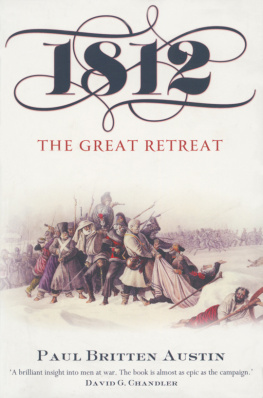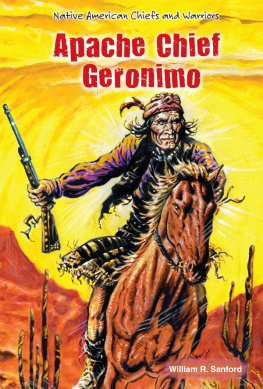2009 by the University of New Mexico Press
All rights reserved. Published 2009
Printed in the United States of America
141312111009123456
First ebook edition, 2021
Ebook ISBN 978-0-8263-4588-2
LIBRARY OF CONGRESS CATALOGING-IN-PUBLICATION DATA
Britten, Thomas A. (Thomas Anthony), 1964
The Lipan apaches : people of wind and lightning / Thomas A. Britten.
p. cm.
Includes bibliographical references and index.
ISBN 978-0-8263-4586-8 (hardcover : alk. paper)
1. Lipan IndiansHistoriography.
2. Lipan IndiansEthnic identity.
3. Lipan IndiansSocial life and customs.
I. Title.
E99.L5B75 2009
976.4004'9725dc22
2008043132
Book design and type composition by Kathleen Sparkes.
ILLUSTRATIONS AND MAPS
ILLUSTRATIONS
Note on Illustrations
Friedrich Richard Petri (18241857) completed his sketches and watercolor paintings of Texas Indians in the 1850s. According to anthropologist William W. Newcomb, in his 1978 book German Artist on the Texas Frontier, a close examination of the historical evidence (i.e., clothing, ornamentation, weaponry, and Petris known haunts) supports the conclusion that some of the Plains Indians Petri portrayed were Lipans and reinforces the belief that all of them probably were. It does not rule out the possibility that some of the Plains Indians depicted were Comanches (14243).
MAPS
Note on Maps
All maps created by Matthew A. Crawford.
PREFACE

AS THE SOLDIERS AND CITIZENS of the presidio San Antonio de Bxar and the nearby villa of San Fernando de Valero celebrated New Years Day, 1733, an exhausted Texas governor Don Juan Antonio Bustillo y Ceballos recuperated from his recent six-week campaign against bands of hostile Indians (indios brbaros). For months, small bands of mounted warriors had been stealing his soldiers horses, frightening settlers, and attacking the slow-moving mule trains that trudged back and forth between San Antonio and northern Coahuila, carrying supplies and messages to the lonesome and isolated inhabitants of New Spains northern frontier. The threat that these raiders posed to His Majestys ambitious plans to extend Spains reach beyond the Rio Grande had prompted Bustillo to assemble a force of over two hundred soldiers and friendly Indian auxiliaries to track them to their rancheras located far to the north on the San Sab and San Gabriel rivers. The Indian raiders, whom the Spaniards identified as Apaches, Lipans, Ysandis, and Chentis, had given Bustillos army a tough fight before dispersing in the face of musket and cannon fire, and the governora veteran Indian fighterfelt fortunate that Spanish casualties had been light. Besides recapturing several hundred horses, the Spaniards brought back thirty Apache prisoners, all women and children, with whom Bustillo hoped to leverage his demands that the Indians cease their hostilities. On January 4, the governor sent two of the women home, bearing invitations for their chiefs to visit San Antonio to discuss peace. Three tense weeks passed before the Spaniards saw smoke in the distance, the signal that the Indians had arrived to parlay. A few days later, one of the women, escorted by three warriors, informed the governor that several chiefs were indeed interested in opening a new chapter in their relationship with the Spaniards. Remaining cautiously optimistic, Bustillo treated the four visitors as honored guests, and after a brief stay, they disappeared once again into the wilderness, promising to return within two moons.
In a demonstration of friendship and goodwill, the Spaniards allowed small groups of Apache traders to enter and leave San Antonio with relative freedom while they awaited the arrival of the chiefs. The Indians brought piles of beautifully tanned bison and deer hides to exchange for tobacco, coffee, corn, sugar, and assorted trinkets. Toward the end of March, a group of four Apaches, having completed their business, made their way out of town accompanied by a three-soldier escort. Once they reached the outskirts of the settlement, however, a large contingent of Apache warriors rode up, surrounded the bewildered soldiers, and captured two of them. What the two men endured next at the hands of their captors must have been ghastly. Witnesses testified that they discovered the remains of the two Spaniards shortly after their abduction. The Apaches had pierced their bodies repeatedly with arrows and lances, and in some places stripped the flesh away from their bones. The gruesome incident sparked panic and despair in San Antonio, where only days earlier, settlers had clung to the hope that peace was at hand. Franciscan missionaries labored to restrain their Indian neophytes from fleeing into the wilderness for safety, while soldiers petitioned to have their families removed beyond the Rio Grande and out of harms way.
The Apaches responsible for this atrocity were relative newcomers to south Texas, but the Europeans did not understand their precise identity and organization at the time. Within a decade, however, there probably was not a Spanish official in Texas unacquainted with these tenacious warriors, whose distant ancestors had inhabited the mountains and boreal forests of Alaska and northwestern Canada. Though few in number, and scattered in small, autonomous bands, the Apaches exerted an important influence on the development of the American Southwest. The easternmost group, the Lipan Apaches, made especially significant contributions in Texasone might even say they played a lead roleduring much of the sixteenth and seventeenth centuries. In the eighteenth and nineteenth centuries, the Lipans role changed, but they remained crucial players in the pageant of Texas history, right up to the twentieth century. One need only peruse the correspondence of soldiers, missionaries, and settlers on the south Texas frontier to grasp the terror, frustration, amazement, and admiration that most felt when it came to their dealings with the Lipans. During the Spaniards century-long tenure in Texas (from the first decade of the eighteenth century through the first decade of the nineteenth century), they considered the Lipans as the single greatest Indian threat to the development of New Spains northern frontier. During the remainder of the nineteenth century, frontier officials representing the interests of Mexico, Texas, and the United States also devoted considerable time, manpower, and treasure to address the Lipan problem. Oddly, except for Thomas Schilzs brief history















